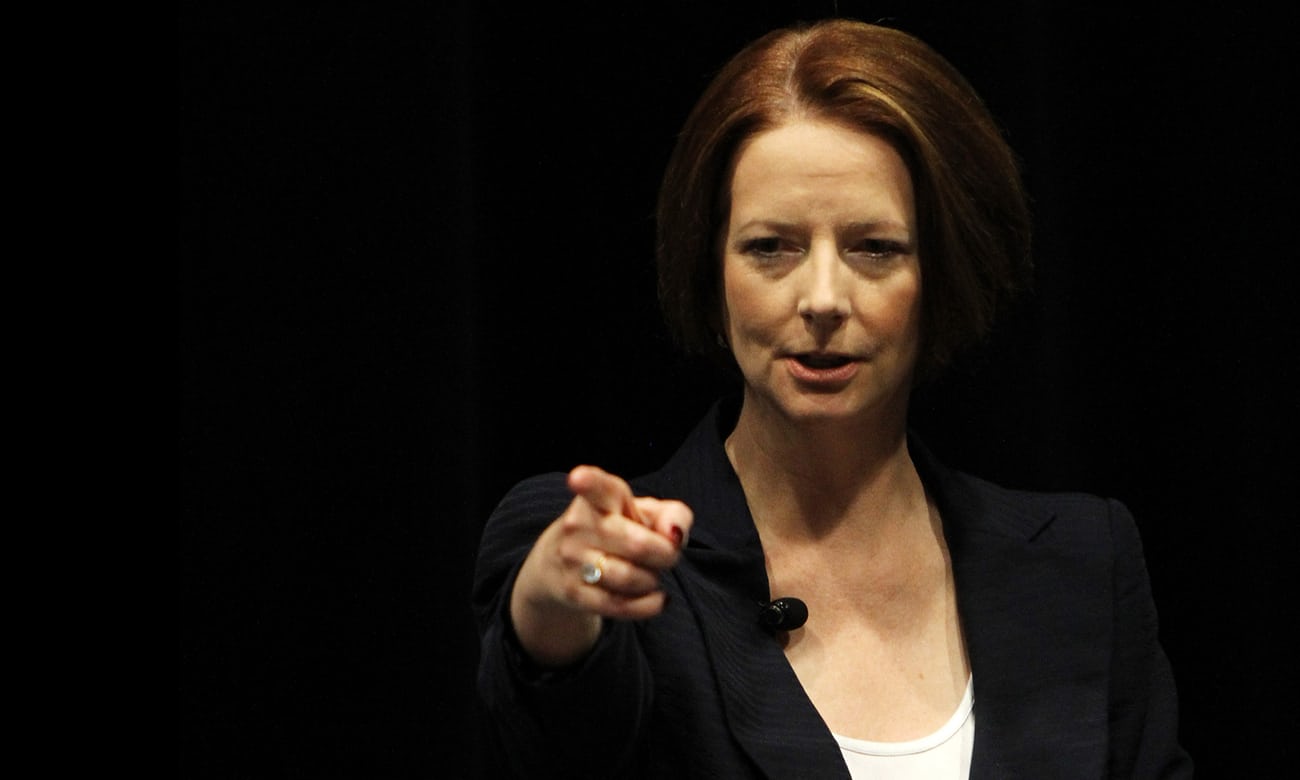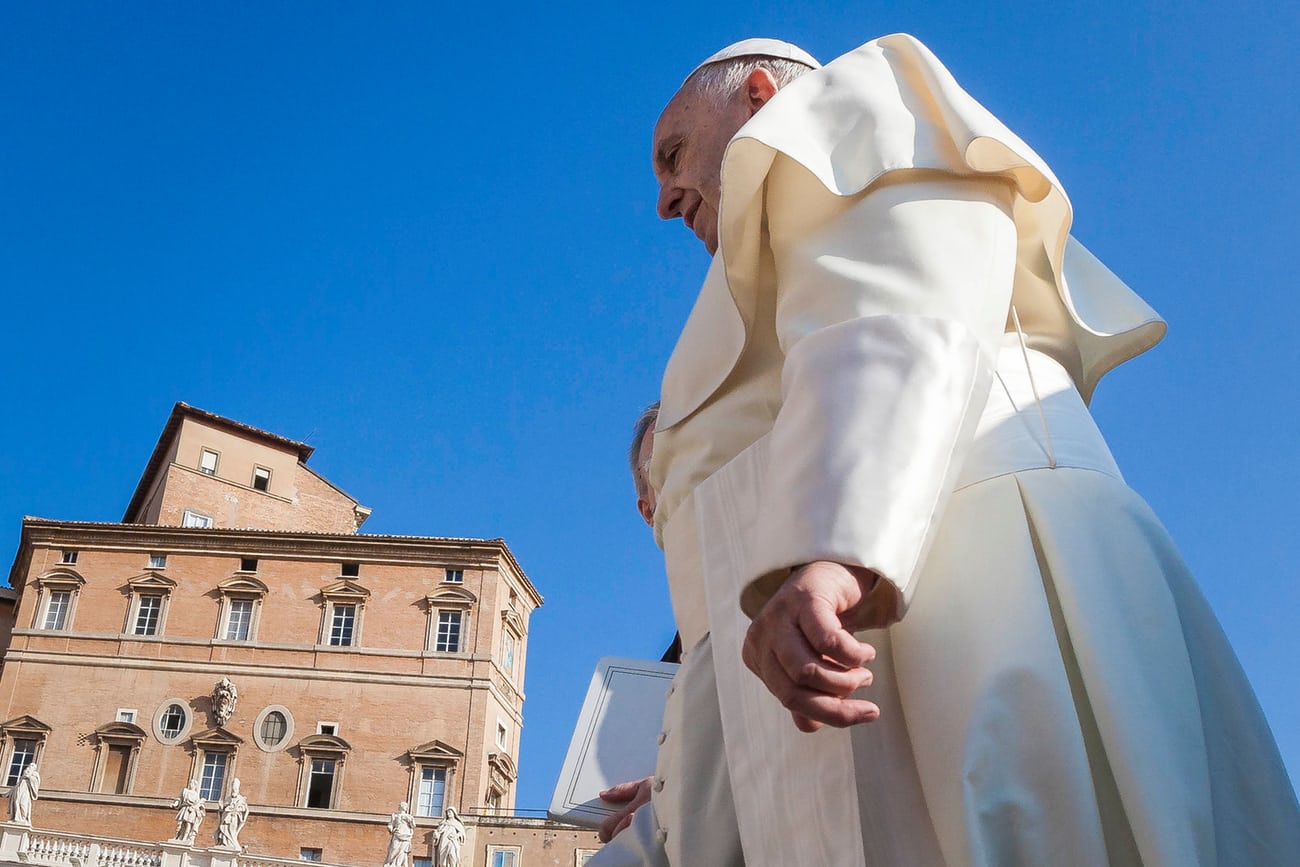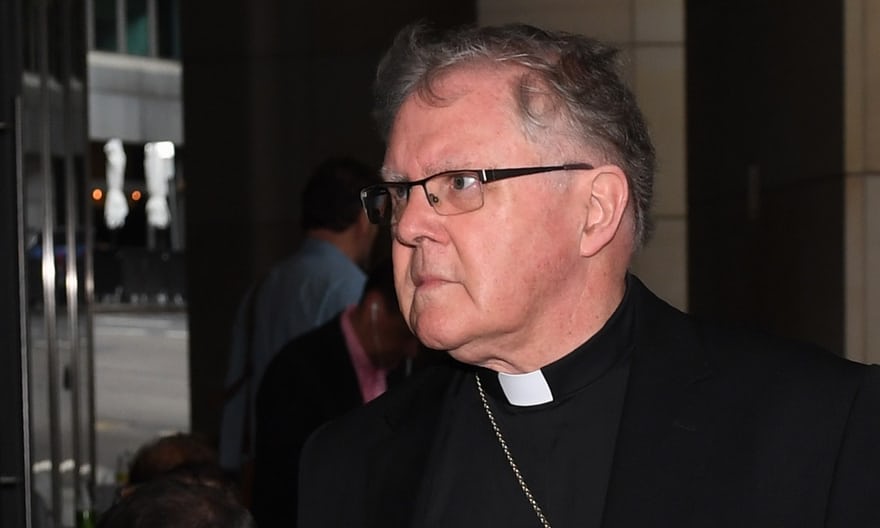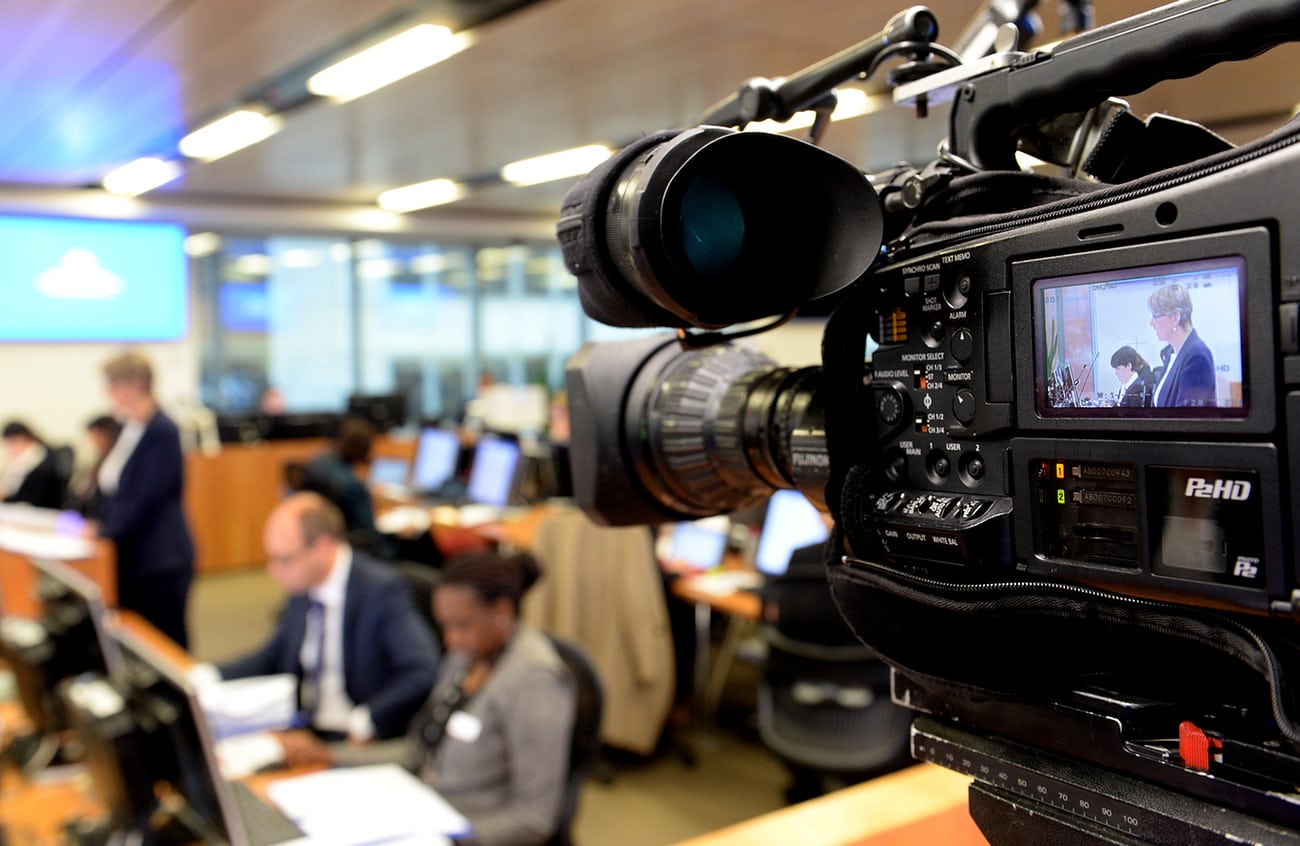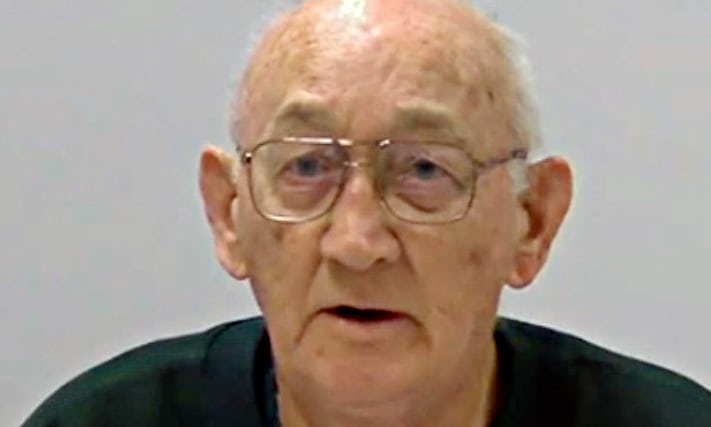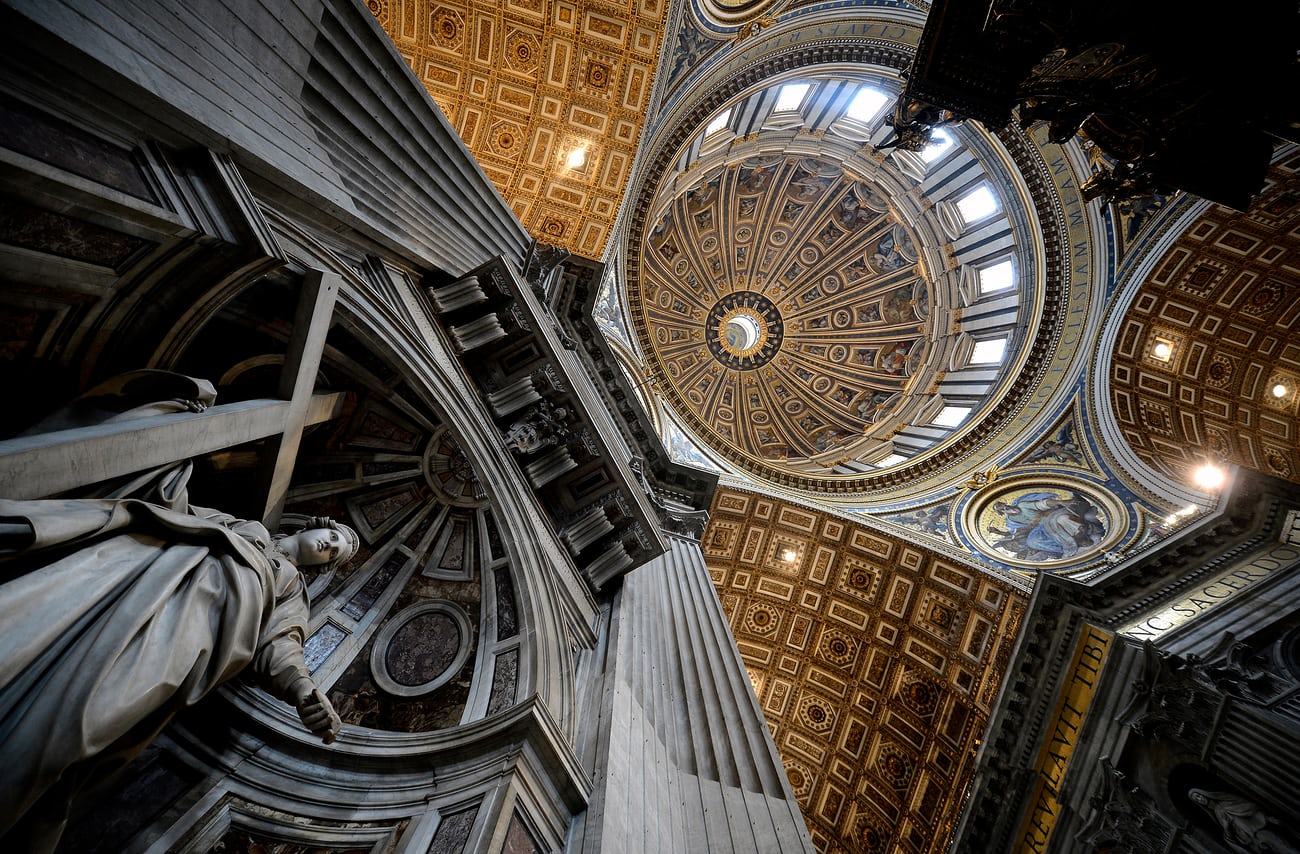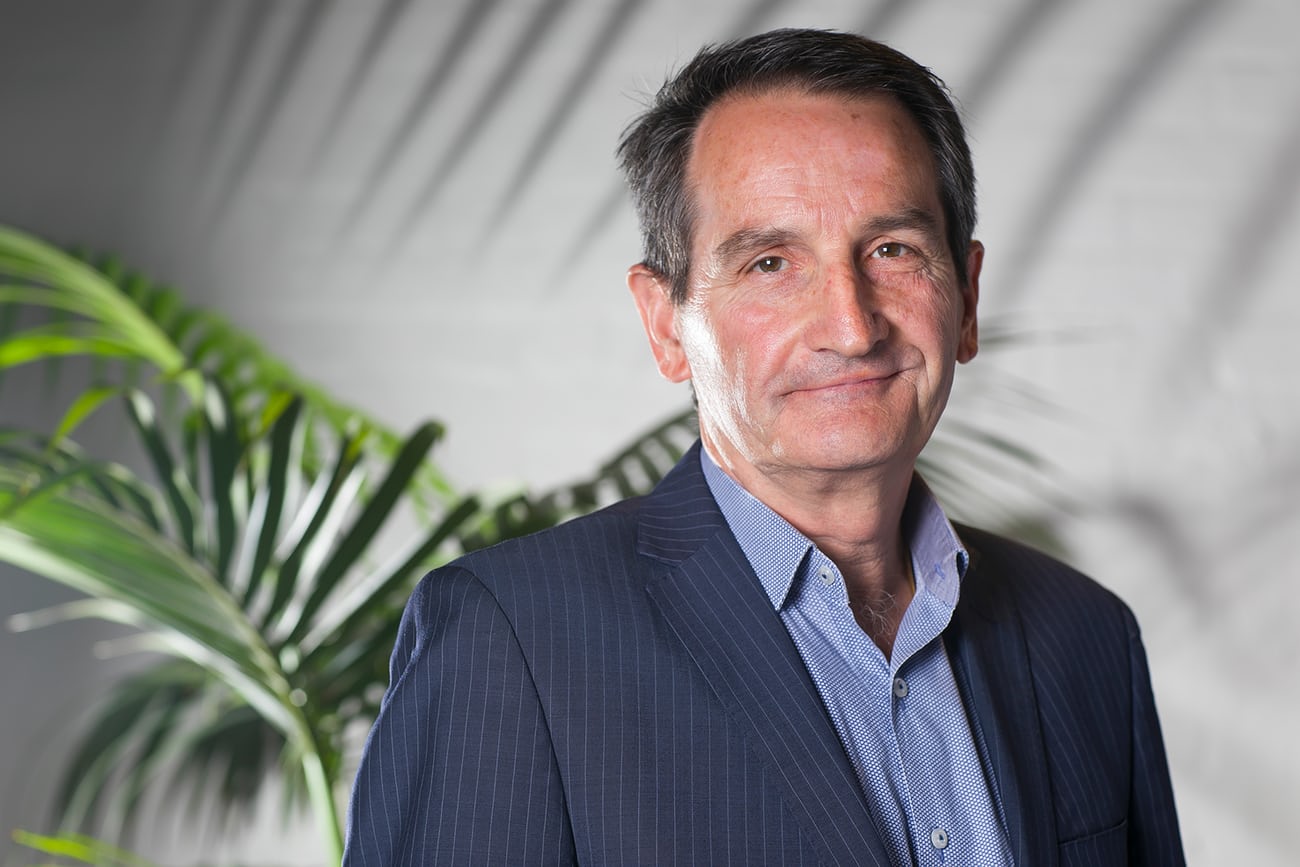Grappling with Rome: David Marr's Lessons from the Royal Commission
By David Marr
Shame, embarrassment and cowardice are, in a sense, the easy answers. Archbishop Mark Coleridge of Brisbane, one of the big men of the Catholic church in this country, pointed to a deeper truth: “It was that sense of the church doing its own thing, being a law and a world unto itself.” This was brave. “In many ways, the Catholic church in Australia has been profoundly embedded, but paradoxically, on the other hand, the Catholic church in Australia has at times looked the other way, been a law unto itself, and seen that it does things its own way: ‘We’ll look after the problem ourselves.’ “Well, we didn’t … ” Conceived by Julia Gillard, the royal commission is the most thorough national inquiry into the scandal of child abuse that the world has seen. Though barely under way when Gillard was shuffled out of politics by Kevin Rudd, she listed it confidently among her big achievements: “I believe it will have many years work in front of it, but it will change the nation.” That’s already clear. But nothing it does – nothing it uncovers and nothing it recommends – can change Rome. Yet the political challenge that must be faced across the country now the commission has finished its work is how to grapple with Rome – an old, shrewd and complicated institution that has never quite abandoned its role as a world power. Rome still sees itself as the judge and protector of its priests. Local bishops can’t sack them – they can stand them aside but not sack them. And Rome has never issued an unambiguous directive to priests and members of religious orders who become aware of child abuse in their ranks to call the police. Coleridge cited lots of talk but no “structured discussions” on the point. Canon lawyers assembled by the chief royal commissioner, Peter McClellan, debated the issue for hours. Leo XIII seemed to say something quite promising but in the end they couldn’t turn up a clear direction from the church to report priestly abusers to the state. McClellan thought the discussion extraordinary. How can church law be so opaque? “Maybe I’m just an ordinary common lawyer, but we normally say things in simple words.” The canon lawyers balked. McClellan suggested Rome might adopt a plain formula: “Obey civil law.” What emerged from the evidence of church lawyers, theologians and a slew of bishops about the workings of Rome in Australia was the blueprint of an organisation perfectly suited to eluding control. Coleridge made rather a joke of it: “When I hear people talk about the monolithic Catholic church, I think to myself, which church are we in? It’s like herding cats … ”
Here is the gist of their evidence. First, the church is a monarchy. “I’m not so naive to think that the monarchy is going to fall,” Tom Doyle told the commissioners. “There has never been a monarchy that we know of that has voluntarily given up its system in favour of democracy.” Doyle is one of the heroes of this saga. As a young priest working in the early 1980s in the papal ambassador’s office in Washington, he saw what was looming. In Louisiana, juries were beginning to award victims huge damages. Police were beginning to pay attention. The press was waking up to a great scandal. Louisiana was news around the world. Doyle warned American bishops a catastrophe was looming. He was ignored. The church hunkered down. Doyle’s rise through the ranks never happened. Monarchies resist change. Second, the church is a foreign power. In 2014 it used its status as a little state to deny vital documents to the commission. The refusal was not blanket. Rome’s obstinacy came hedged about with respectful rhetoric. But when it mattered the church said no. McClellan got the message: “Our experience is that documents generated in Rome in relation to a perpetrating priest won’t be available to civil authorities in the state where the priest lives. That’s what it amounts to.” Third, the church really doesn’t exist. It’s everywhere but nowhere. It has no more legal form in Australia than a gathering of book clubs. All those dioceses and orders with their immense property holdings are mere unincorporated associations. Among other things: they can’t be sued. Fourth, no one here can issue orders to every corner of the Australian church. There’s a local bishops conference with considerable authority. But all decisions that really matter are referred to Rome. And bishops have no authority over the orders that run schools and hospitals. Between priests and brothers is a great divide. And the orders have been found to be sheltering appalling numbers of paedophiles. “It’s my experience that many of these orders are laws unto their own,” Dr Michelle Mulvihill, a psychologist working within the church on issues of child abuse for the last 20 years, told the commission. “They’re their own people and they will do whatsoever they want. There’s like a licence to do whatever. I think it’s very fraught and it’s very dangerous for the Australian community.” Fifth, the fiction in this monarchy is the lack of downward control. Coleridge explained: “A priest is not an employee of mine. It is a bit like the government appointing a judge. The government appoints the judge, but once she or he is appointed, she or he has a quality of independence that is quite unusual. So I appoint priests, but not as employees …
“It’s not unlike bishops and the pope, I hasten to add. The pope, in the end, formally appoints me, but I’m not his branch manager. Once I am appointed bishop, I’m conceded a great deal, perhaps an excessive amount, of independence.” Its contradictions are its strength. Here is an ancient machine capable of great good yet built to defend its worst with astonishing tenacity. And it’s a monarchy that claims to have anarchy at its heart but ruthlessly exercises internal power. An institution of deep charitable purpose with walls to defend its wealth against all comers. In short: a hard beast to wrangle. 4,444 accusers Cardinal George Pell lost his cool the afternoon the royal commission was announced. He was by turns weary and defiant. Under interrogation by journalists he complained about the media: “Because there’s a press campaign focused largely on us it does not mean we are largely the principal culprit.” Four years later the commission rolled out the figures that proved the cardinal wrong. It was not designed this way but the evidence determined that this would turn out to be, at heart, an inquiry into the Catholic church. The commission picked over the failings of the Scouts, the YMCA, the Salvation Army, children’s homes for Aboriginal kids, the notorious Parramatta Training School for Girls, Swimming Australia, the ultra Orthodox Jewish Yeshiva sect, a Yoga ashram, the Jehovah’s Witnesses, performing arts centres, the military and a number of the most expensive private schools in the nation. But its principal focus became the failings of the Catholic church. There is no arguing with the figures. Most survivors attending the 8,000 private sessions with commissioners reported abuse in faith-based institutions. Two-thirds of those were abused in Catholic institutions.
With cool precision, Gail Furness SC, counsel assisting the commission, ran through the numbers: “Between January 1980 and February 2015, 4,444 people alleged incidents of child sexual abuse made to 93 Catholic church authorities. These claims related to over 1,000 separate institutions.” Francis Sullivan, the chief executive of the Truth, Justice and Healing Council, the body representing the church before the commission, was aghast. He had expected maybe a hundred paedophiles would be turned up in Catholic parishes and schools. The figure was nearly 2,000. “If this was to have occurred in any other institution,” he told the commission, “it is hard to imagine that it could continue to operate.” Sullivan concedes the headcount of victims is, at best, an estimate. “It is now commonly accepted that only one in six adults ever reveal to authorities the sexual abuse they experienced as a child,” he told the Western Australian Bar Council in October. “Given this we can safely assume that the actual incidence of child sexual abuse by clerics and others in the Catholic church is far higher.” Could the true headcount be 20,000? “You can’t say that’s not possible,” Sullivan told the Guardian. “There will be people who have gone to the royal commission and talked about their experience in the Catholic church and the Catholic church doesn’t even know about them.” The public face of the commission was the public hearings, the interrogation of men of such exalted rank they’d clearly forgotten what it was like to be asked questions – let alone be compelled to answer them. And their interrogators were so often women. The double act of Furness and McClellan was beautiful to watch. She would hack her way through the undergrowth and take an axe to the tree she was after. But if it stubbornly refused to fall, McClellan would give it a nudge, such a gentle little nudge, and bring it crashing down. In hearing rooms across the country, church and state came face to face before the commission. Ambushes were sprung and confessions extracted. Men of faith were made to deal in facts. Fragile survivors were led gently through appalling revelations of abuse. Memories failed. Lies were told blind. All this was streamed to the world. In New York and Israel, members of the Yeshiva sect watched as their leaders faced public interrogation. Unprecedented, too, was the grilling of leaders of another secretive sect, the Jehovah’s Witnesses, and 22,000 viewers followed that contest live.
But the ratings winner in all the years of hearings turned out to be Case Study 28: Catholic church authorities in Ballarat. It’s no surprise. In the public imagination, Ballarat was the epicentre of neglect, abuse and the outrageous protection of the notorious paedophile Father Gerald Ridsdale. Fifty-four thousand viewers watched as these horrors were brought to light. That was the public face but behind the scenes the staff of hundreds were gathering, sorting and analysing documents. From the moment the commission got under way, orders for discovery – as they are known – went out to the faiths, to schools, to sporting groups and insurance companies. The demand: search your archives, empty your desks, clean out the cupboards, open the safes and give us your documents. Documents poured in for four years. They were not only evidence of what happened but of what the faiths knew. They mapped in extraordinary detail the scale and patterns of abuse in this country. But they also measured the extraordinary capacity of schools and churches and orphanages to keep their terrible secrets. How secrets were kept – and how pitifully easy it was to keep them – turned out to be one of the key lessons of the commission. It was easy to overlook, as we sat in the hearing room, aghast at the latest revelations, that somehow, only the other day, these were deep secrets. So we come back to the equivocal position of the Catholic church and its particular methods of keeping secrets – to make sure no one broke ranks for all those years in Buenos Aires, Berlin and Ballarat. Francis Sullivan says secrecy is simply in the DNA of the church. “Bishops and religious leaders embrace their diocese or religious order in familial terms. It’s intimate and therefore they approach strife, difficulty and conflict by circling the wagons. They keep the family mess to the family. I think it’s instinctive. And that’s what I mean by culture, like DNA.” That’s not an explanation that satisfies lawyer critics of the church. They look to Rome. Kieran Tapsell, a former seminarian and acting judge of the New South Wales district court, has written in depth – and gave evidence to the commission – about obligations of secrecy imposed by Rome through canon law. Angels dance on pins. Canon lawyers cite vague Latin texts back and forth but none dispute that whatever the instincts of the church might be, tough rules of “pontifical secrecy” were laid down by Rome in 1922 – a rule so secret it may hardly have been known by the church in Australia – and again in 1974. Both forbade in almost all circumstances victims, witnesses and church officials going to the police. Offenders faced excommunication. The question that concerned McClellan was whether those rules still bind Catholics.
Clearly they have been wound back. Under pressure from bishops in Ireland and the US facing prosecution for failing to report paedophiles, the Vatican gave a dispensation for them to go to the authorities. There would be no martyrdoms. That dispensation was extended in 2010 to the religious in all countries where reporting is mandated by law. But the default setting of the Vatican, according to evidence before McClellan, remains secrecy. “I don’t think there is any doubt that if there were no civil laws requiring reporting, then the pontifical secret still applies,” says Tapsell. “In Western Australia and Queensland, for example, just to take two, bishops are under an obligation not to report, under canon law, to the police.” Sullivan points to the Towards Healing protocol of the Australian church as proof that things are not as bad here as they might seem. “In places like Australia or the United States – in western countries where the rule of law is respected – it’s a no brainer,” he says. “All of us should go to the police without condition.” But on close reading the 2016 protocol is still not an unequivocal direction to pick up the phone and dial 000. It’s hedged about with conditions. If the law demands it, obey the law. But where the law doesn’t mandate reporting and the victim is reluctant to go to the police, church personnel are merely advised they should – not shall – give the authorities particulars of the abuse stripped of any “details that could lead to the identification of the complainant”. Australian bishops can’t even agree if the sacred seal of the confessional forbids them telling authorities what they learn, not from paedophiles seeking absolution but from their victims. The rapist priest is safe, but is he also saved from the revelations of his victims in confession? Some think so. Some don’t. McClellan suggested the bishops ask Rome to adjudicate. They declined. Meanwhile, the commission has been busy cleaning up the mess, making 2,559 referrals to authorities, mainly the police. This has led to more than 200 prosecutions. Trials are under way. More are scheduled. More charges will be laid. Cards stacked against change Politicians may look back on the last few years as the easy time in this saga. With the presentation of the commission’s final report this week, responsibility for dealing with the wreckage of the past and protecting children in the future now passes back to them. Every government in the country backed the commission. Now all those governments must consider its recommendations. Some will call for money – a great deal of money – and others for courage. Wrangling with the faiths will take particular resolution. It might be thought that after the shame visited on them during commission hearings and brutal verdicts in commission reports, the political influence of the faiths must be spent. That’s not the case. The NSW Greens MP David Shoebridge has led a number of moves to implement early recommendations of the commission. None has succeeded. He told the Guardian: “The power of the church in parliaments is far greater than it is in the community.” After the marriage equality debate, the commission’s recommendations will present the next battleground with the faiths as this country grapples with defining a new balance between church and state. The cards are stacked against change. None of the recommendations McClellan has made to deal with the unique role of the Catholic church has got anywhere yet. It’s a worrying portent for the future of the commission’s work. McClellan has recommended this country follow America’s lead and compel the church to take on corporate shape and form. The same recommendation was made in 2013 by the Victorian parliamentary inquiry into the handling of child abuse by religious and other organisations. Those victims in Louisiana were able to win millions in damages all those years ago because the church is a corporation there. Corporate form also allows governments to hold churches more easily to account, particularly in the spending of the taxpayer billions they are given to run hospitals and schools. Nothing is happening in Australia. McClellan recommended a simple fix to laws across Australia to make sure victims can, at least, access church funds when juries award them damages. Many churches – particularly the Catholic church – hold their assets in impregnable trusts. McClellan’s solution is simple: if the church doesn’t nominate a properly funded body to sue, victims can sue the trusts. No parliament in Australia has moved to make that change.
It is to the credit of Francis Sullivan’s Truth, Justice and Healing Council that all the dioceses and orders in Australia have now agreed to pay up if they are sued. But that is a gift – a decent gift – not the law. Meanwhile, solicitors are reporting that the church is digging in to protect its assets. Under pressure from the public, the commission and the Truth, Justice and Healing Council, dioceses and orders agreed to waive deeds of release and reopen old settlements. This was enthusiastically welcomed by survivors. It seemed a fresh eye and new generosity were to be brought to their claims. But many solicitors, including Dr Judy Courtin, representing victims taking this second chance, report a new hostility in the church. “The Archdiocese of Melbourne has become more legalistic and more adversarial,” she told Guardian Australia. Her complaint extends not to all dioceses and not to all orders but widely in the church. “They’re playing by lawyers.” Sullivan, nearing the end of his term as chief of the Truth, Justice and Healing Council, is proud of the work that’s been done herding the difficult Catholic interests he represents. All diocese and orders have agreed to join a national redress scheme for victims, to be backed by governments. Sullivan estimates the bill for the Catholic church will be a billion dollars. A new body called Catholic Professional Standards Limited, run by laymen and women, has been set up to audit compliance by bishops and religious leaders, with new standards adopted by the church for child protection. Those reports will be public. Sullivan rates this a revolution in accountability. But this gaunt and rather gloomy man who has frequently excoriated his church over the last five years is more upbeat about developments in Australia than in Rome. After the great promise of the new pope, reform there seems to be dying on the vine. Sullivan fears Francis is backsliding. His 2015 decision to establish a tribunal to deal with bishops implicated in child abuse was announced to great excitement but has never been implemented. Lately the pope has overruled decisions to defrock some notorious paedophile priests, sending them instead to lives of prayer and penance in the hills. In February this year, Marie Collins of Ireland, the last abuse victim left on the pope’s pontifical commission for the protection of minors, resigned with a blast about the stumbling blocks placed in the way of the commission’s work: “Lack of resources, inadequate structures around support staff, slowness of forward movement and cultural resistance … ” Sullivan has spoken of a picture emerging here of “the Vatican establishment, its bureaucrats and courtiers, doing all they can to either undermine the pope or driving an agenda that is about maintaining the status quo and protecting the institution. Business as usual.” At a parish in Sydney earlier this year, he spoke as if the old imperial church of John Paul II, under which the worst of the abuse flourished, was mustering its forces. “If people of goodwill, the good priests, the willing religious, the enlightened leaders, but more importantly people like you – the engaged and informed Catholics – don’t continue to push for change then, as sure as night follows day, the reactionaries will overcome and nothing will change.”
|
.
Any original material on these pages is copyright © BishopAccountability.org 2004. Reproduce freely with attribution.
